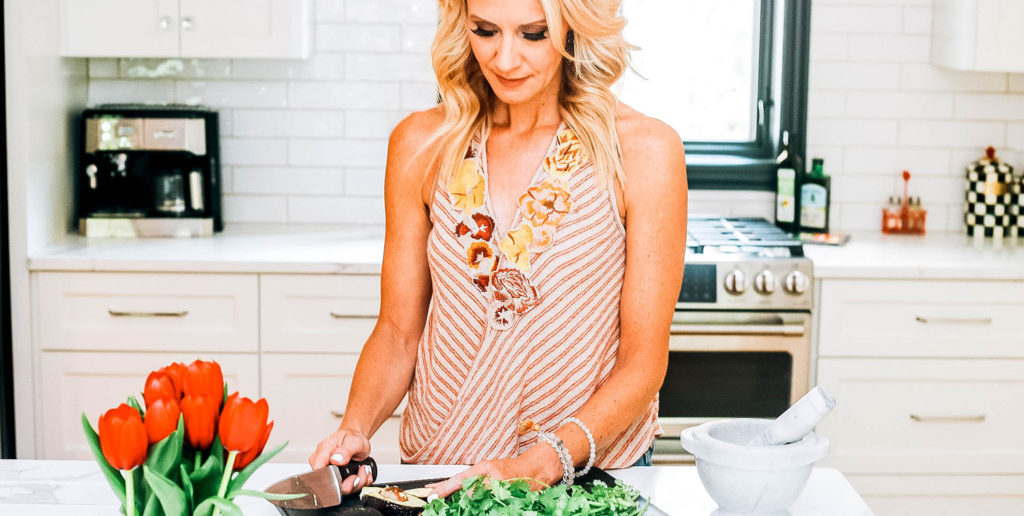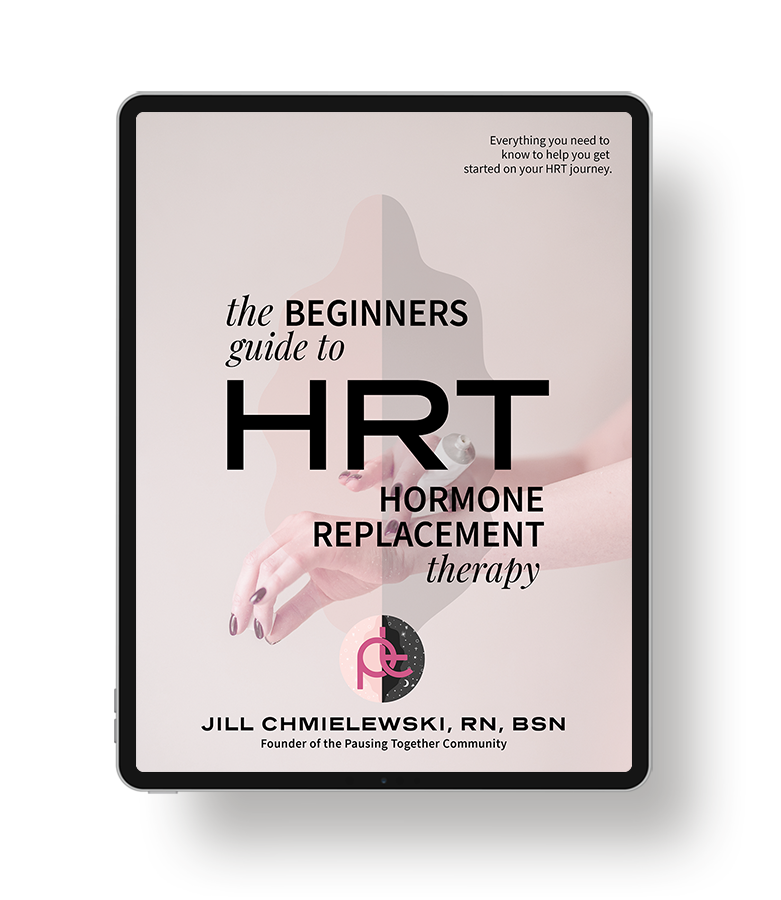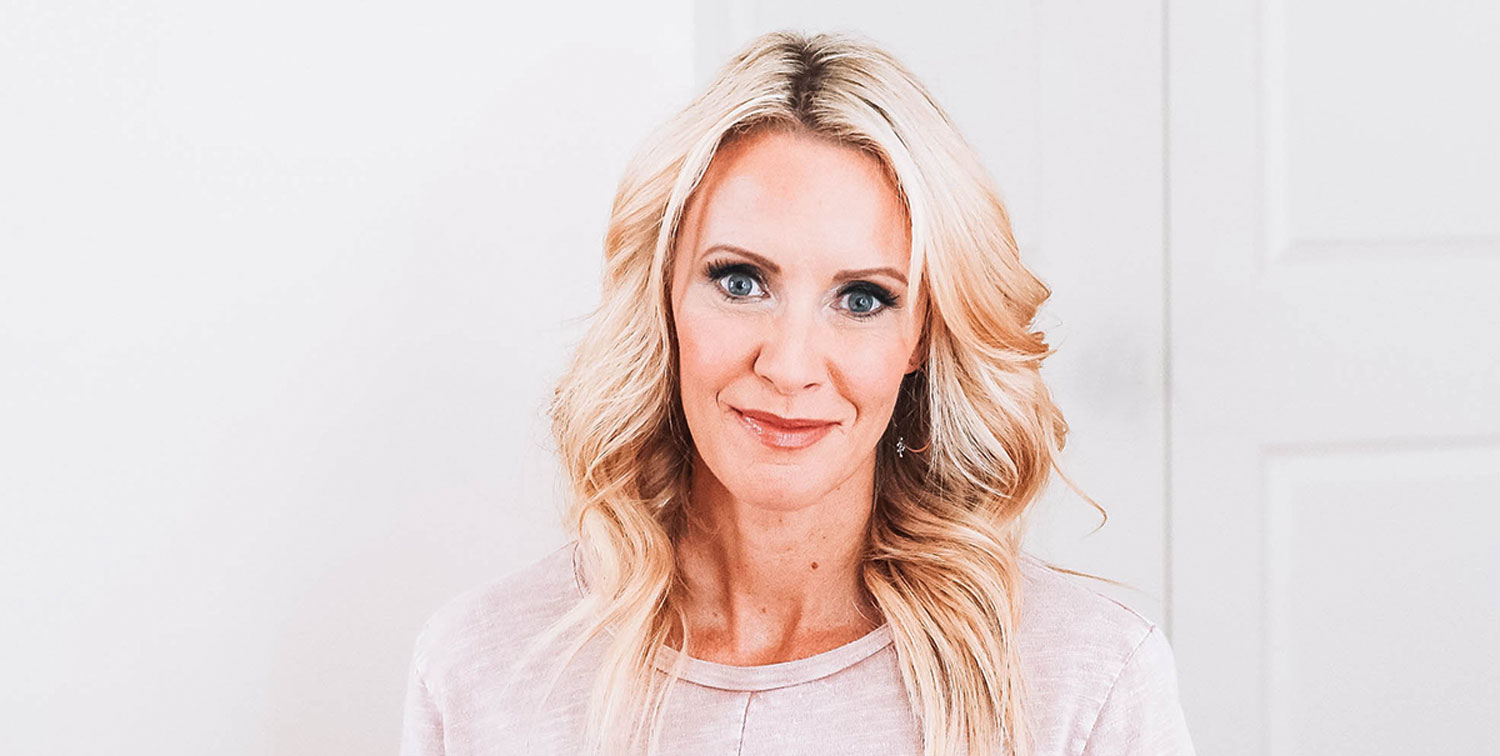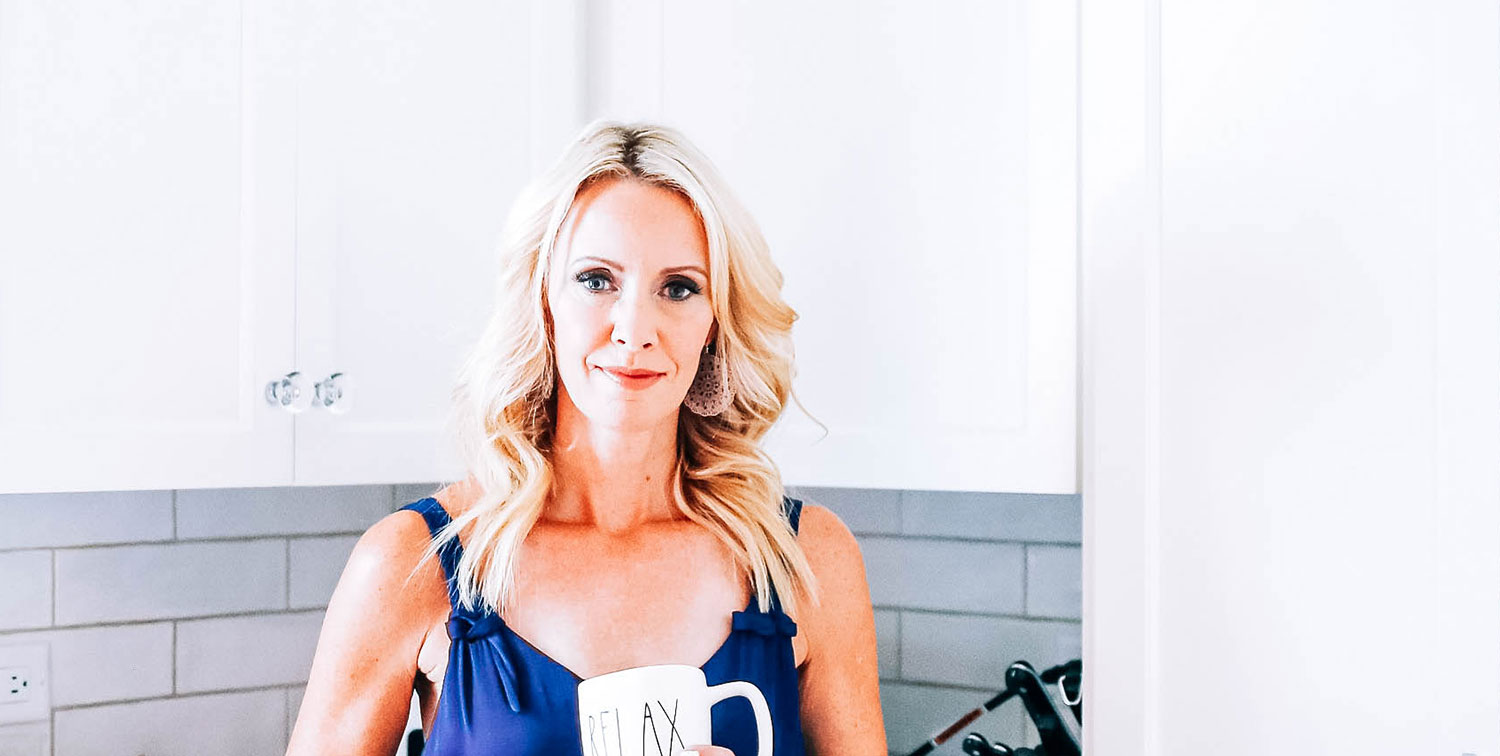Happy New Year dear friends! If you have been hanging around here for a while, you well know that tiny edits are my jam. As a women’s health coach, I work with busy women like you who don’t necessarily have a lot of time in the day to focus on your health. You may be working a full-time job, raising kids, caring for aging parents, or all of the above and the thought of adding another “to-do” to the laundry list of to-dos is probably enough to send you over the edge.
That’s where tiny edits come in ~ they are super simple, yet super doable, and they are the perfect way to slowly and painlessly shift toward better health over time.

I am often asked by friends and clients, “ What change will have the biggest impact on my health?” and if I had to pick just one area to focus on, it would be making edits to your food routine.
The reason why?
Well, most of us eat food at least three times per day, seven days per week. That translates into twenty-one opportunities within a week to eat foods that will either support and nourish the body or to eat foods that will cause harm in the body. Multiply that by 52 weeks in a year, and we’re talking about 1,092 opportunities per year to either support or harm our precious bods.
So let’s do our best to make food choices that support our bods, shall we? And to start, we can begin with some super basic kitchen swaps. Don’t underestimate the power of these swaps ~ each and every one of these tiny edits can make a HUGE difference in your health over the long haul.
Day to Day Kitchen Swaps
1. Swap your sugar
Sugar and artificial sweeteners are a HUGE problem in our diets.
Refined sugar, while technically originating from sugar cane, has been refined (stripped of its nutrients) and causes a rapid rise in blood sugar, so eating it occasionally isn’t necessarily going to pose a problem (assuming you are relatively healthy and do not have blood sugar issues), but eating it every day, several times throughout the day (as most Americans do) has the potential to cause heart disease, diabetes, and other chronic health issues.
If you are using artificial sweeteners because you have heard that they are a better option than sugar, then you need to listen up.
The word artificial basically means “man-made” and not nature made, and our bodies don’t know what to do with the artificial stuff. They are chemicals that do not belong in our body, so check those labels and be sure to get them out of the kitchen ASAP.
These include:
- aspartame (Equal, Nutrasweet)
- saccharin (Sweet’n’Low)
- sucralose (Splenda)
- acesulfame potassium (Sunette, Sweet One)
Aspartame alone has been linked to headaches, migraines, and cancer and it is believed that saccharin contributes to photosensitivity, nausea, digestive upset, tachycardia and some types of cancer! No thank you.
Rather than buying “white” granulated sugar or artificial sweeteners, look for unrefined coconut sugar, or coconut nectar, both which have a lower glycemic index, so they won’t cause the extreme spikes in blood sugar levels, and they can replace refined sugar 1:1 in your favorite recipes.
A little fun fact about coconut nectar ~ Coconut nectar contains seventeen amino acids, as well as a host of minerals and vitamins B and C too, so that may be well worth considering as you make sugar swaps.
Raw honey, pure maple syrup, and dates are better options than granulated white sugar. But sugar is sugar, and at the end of the day, you want to be mindful of your sugar intake.
There continues to be controversy over stevia, which is a no-calorie, all-natural sweetener that comes from the leaf of a flowering plant. There are many types of stevia, and the type and quality matter. If you opt for stevia, you’ll want full, green leaf stevia or stevia leaf extract. But watch the label; many stevia brands like Truvia, Stevia in the Raw, and Pure Via have added dextrose and other so-called “natural flavors” to their products. It’s best to stick to brands like Sweet Leaf which contains just the stevia extract and inulin (a natural prebiotic fiber made from the chicory root).
2. Swap your salt
It’s not that traditional table salt is necessarily “bad” for your health, but traditional refined table “salt” is manufactured by taking natural salt and heating it to 1200° Fahrenheit which alters the chemical composition and strips the salt of its minerals during the process, destroying all of its nutritional benefits.
Considering the number of times that we sprinkle salt on our food each day, wouldn’t you rather use salt that offers health benefits?
Himalayan sea salt contains all of the 84 elements found naturally in your body and has a whole slew of health benefits from supporting sinus, respiratory, and vascular health to supporting your libido! (Yippee!!)
Instead of filling your salt shakers with table salt, try Himalayan Fine Pink Salt instead. Trader Joes, Target, Amazon, and most major supermarkets carry it in the spice/salt section.
3. Swap conventional meat for grass-fed meat
I get questioned often as to whether it’s worth the extra money to pay for grass-fed beef. The answer is a resounding YES!!
With nearly 8 billion people in the world, many of them big-time beef-eaters, the demand for beef is astoundingly high.
Cows are naturally meant to eat grass, but to save money and keep up with the demand for beef, factory farmed cows, also known as conventionally fed cows, are fed corn because it is cheap (and often genetically modified). But corn makes cows sick, so they are given antibiotics to keep them from getting sick and hormones to fatten them up. Unfortunately, when you buy conventionally farmed meat, you are ingesting sick animals filled with hormones and pumped full of antibiotics. Sounds kind of icky, doesn’t it?
As you move toward making simple kitchen swaps, make sure you opt for grass-fed meat whenever possible. Make sure that the label reads “organic” which means that the cow grazed on grass that was not treated with any pesticides or chemicals.
If buying grass-fed meat is hard on your budget, you may consider making a couple of meatless meals per week to offset the cost. It will not only help your budget, but it will help the planet too!
4. Swap conventional foods for organic
Price seems to be the biggest pushback that I get from clients when it comes to purchasing organic foods. So hear me out.
Organic, non-GMO REAL FOOD is more expensive but for good reason:
- The labor involved in organic farming is more expensive
- The living conditions for the livestock is more expensive
- The time and labor involved in crop rotation is expensive
- The price to get certified as USDA organic is expensive
- Organic food grows more slowly, which ultimately means the supply cannot meet the demand, which makes it more expensive
Keep in mind that organic simply means that the food has been grown the way that it was meant to be grown, in its most natural state and without man-made intervention (like pesticides, herbicides, antibiotics or additives).
Processed foods, on the other hand, are typically mass produced, and have essentially been stripped of their nutrients, and replaced with a bunch of additives and chemicals that your body doesn’t recognize. No wonder they are so cheap!
Bottom line: Whenever possible, choose organic foods, even if it means that you need to spend a few extra dollars. You won’t have to worry about chemicals or artificial additives harming your precious body.
5. Swap your oils
Forget everything you thought you knew about oils! Vegetable oil, canola oil, and margarine are some of the most chemically altered foods in our diets, often made from genetically modified crops that have been heavily treated with pesticides (yet they often get promoted as being healthy).
Vegetable oils are found in practically every processed food, from salad dressings and mayo to conventional nuts and seeds. These oils are some of the most harmful substances you can put into your body.
Click here for my FREE Fats & Oils Shopping Guide and spend some time this week swapping out those unhealthy oils in your kitchen with healthy alternatives. Pay special attention to the shopping guide to learn ideal uses for each oil – not all oils can safely be heated.
Healthy oils like olive oil and nut oils can harm your body when heated beyond their smoke point. A good quality olive oil is pressed within just a couple of hours after picking, so look for a “harvest date” that is less than 12 months old when you use it. And be sure to buy oil in dark containers or tins as olive oil will become rancid when exposed to light or heat.
Happy Swapping!





